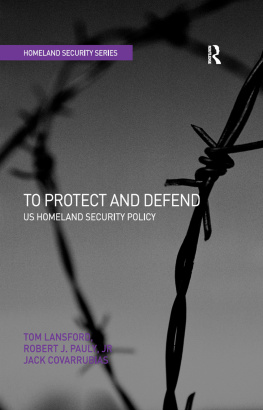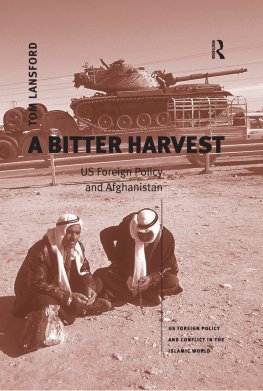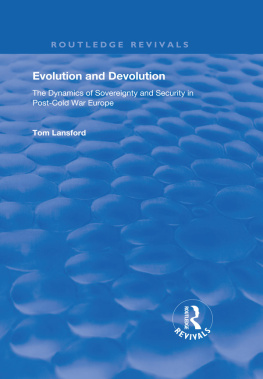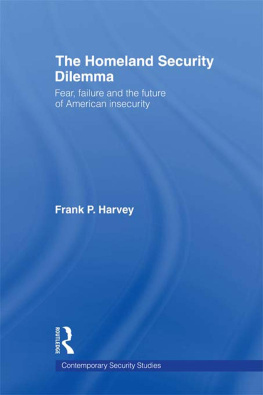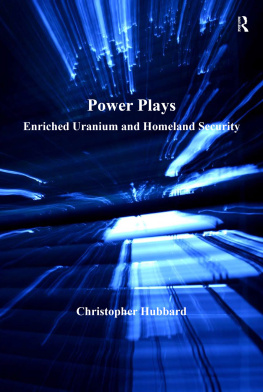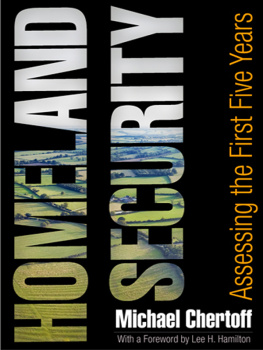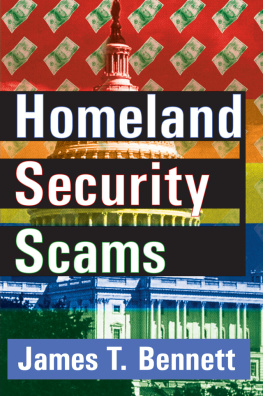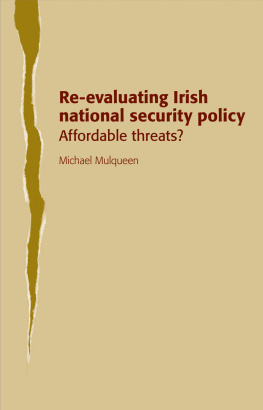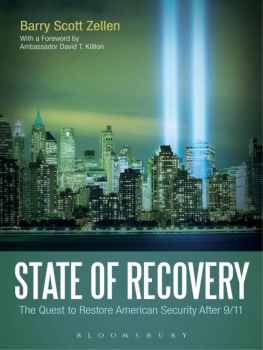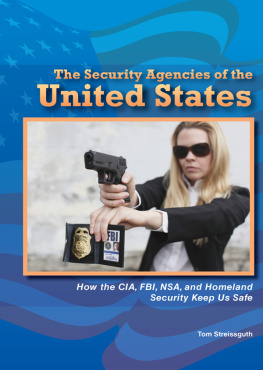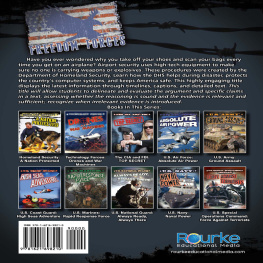TO PROTECT AND DEFEND
Homeland Security Series
Series Editors:
Tom Payne, University of Southern Mississippi, USA
Tom Lansford, University of Southern Mississippi, USA
This series seeks to provide a body of case studies to explore the growing importance and prominence of homeland security to national defence policy and to examine the development of homeland security within the broader context of national defence policy in the United States and other major developed states. This series will identify and analyze the major threats that are particular to homeland security, as well as those that affect broader national security interests. Comparative studies will be used to elucidate the major similarities and differences in how states approach homeland security and works which advocate new or non-traditional approaches to homeland security. The series aims to integrate information from scholars and practitioners to provide works which will influence the policy debate and examine the ramifications of policy.
To Protect and Defend
US Homeland Security Policy
TOM LANSFORD
University of Southern Mississippi in Long Beach, USA
ROBERT J. PAULY, JR.
University of Southern Mississippi - Gulf Coast, USA
JACK COVARRUBIAS
Old Dominion University, USA
First published 2006 by Ashgate Publishing
Published 2016 by Routledge
2 Park Square, Milton Park, Abingdon, Oxon OX14 4RN
711 Third Avenue, New York, NY 10017, USA
Routledge is an imprint of the Taylor & Francis Group, an informa business
Copyright 2006 Tom Lansford, Robert J. Pauly, Jr., and Jack Covarrubias
Tom Lansford, Robert J. Pauly, Jr., and Jack Covarrubias have asserted their moral right under the Copyright, Designs and Patents Act, 1988, to be identified as the authors of this work.
All rights reserved. No part of this book may be reprinted or reproduced or utilised in any form or by any electronic, mechanical, or other means, now known or hereafter invented, including photocopying and recording, or in any information storage or retrieval system, without permission in writing from the publishers.
Notice:
Product or corporate names may be trademarks or registered trademarks, and are used only for identification and explanation without intent to infringe.
British Library Cataloguing in Publication Data
Lansford, Tom
To protect and defend : US homeland security policy. - (Homeland security)
1. United States. Dept. of Homeland Security 2. National security - United States 3. Civil defense - United States 4. Terrorism - United States - Prevention
I. Title II. Pauly, Robert J., 1967- III. Covarrubias, Jack
363.3'25'0973
Library of Congress Cataloging-in-Publication Data
Lansford, Tom.
To protect and defend : US homeland security policy / by Tom Lansford, Robert J. Pauly, Jr., and Jack Covarrubias.
p. cm. -- (Homeland security)
Includes bibliographical references and index.
ISBN 0-7546-4505-3
1. Terrorism-Government policy--United States. 2. National security--United States. 3. National security--United States--History. 4. Terrorism--Prevention--Cross-cultural studies. 5. United States--Foreign relations. I. Pauly, Robert J., 1967- II. Covarrubias, Jack. III. Title. IV. Series.
HV6432.L3675 2006
363.325'15610973--dc22
2006005438
ISBN 9780754645054 (hbk)
Contents
This book would not have been possible without the assistance and support of a wide range of colleagues, family members and friends. In particular, the authors would like to thank our editor, Kirstin Howgate, for her encouragement and support throughout the editorial process.
Jack Covarrubias would like to thank Tracy, Sheron and Savannah for their love and patience; Anna for her friendship and kind heart; my mentors, role models and friends for putting up with me.
Tom Lansford would like to thank Denise von Herrmann and his colleagues in the Political Science department at the University of Southern Mississippi for support through this project. I would also like to thank my parents, Max and Ivy Lansford and siblings, David and Cynthia, and their respective families. Special consideration goes to both my family and to Mike Pappas and family, and Frank and Sue Reed, for their help following Hurricane Katrina. Without their assistance, this manuscript would not have been completed. As always, special thanks goes to Mr. James D. Buffett for assistance in manuscript preparation. I also owe a debt of gratitude to a range of friends and colleagues in the profession, but would like to particularly praise Dr. Robert P. Watson who has been a friend and collaborator for many years. Finally, my deepest thanks, appreciation and love go to Gina and Ella who have been both my inspiration and main comfort through these times.
Robert J. Pauly, Jr. would like to thank Peggy, Bob, Mark, Chris, Sami, John and Missy Pauly for their perpetual love and support in all of my personal and professional endeavors. He would also like to thank Maria Pasalidi for adding a warm smile, a bit of excitement and something to look forward to in the future in the continuing aftermath of Hurricane Katrina.
For the victims of Hurricane Katrina
September 11 2001: A Shock to the American System
On September 11 2001, the perception of security threats to the territory of the United States underwent a change as fundamental as it was devastating. That morning, a transnational terrorist organization known as Al Qaeda prosecuted the costliest attack against US domestic targets in American history. At the behest of Al Qaeda leader Osama bin Laden, 19 Middle Eastern men hijacked four US commercial airliners, which they then used to strike targets in New York City and Washington, DC. Two of the planes flew into the north and south towers of the World Trade Center in New York, causing the eventual collapse of those structures, a third hit the Pentagon on the outskirts of Washington and a fourth crashed in a field in western Pennsylvania after a heroic group of crew members and passengers attempted to retake the aircraft from the hijackers. Collectively, the attacks resulted in the loss of nearly 3,000 lives, the vast majority of which were those of American civilians. The number of fatalities was the largest in a foreign strike on a US domestic target since the Japanese surprise attack on Pearl Harbor on 7 December 1941, an incident that delivered a similar shock to the American public at the time.1 Yet, ultimately, the shock produced by the events of 9/11 was deeper, particularly given the number of civilian deaths and the fact that much of the tragedy unfolded live on national television. As scholar Arthur Hulnick, a former Central Intelligence Agency (CIA) officer, explains:
For those of us who remember the Japanese sneak attack on Pearl Harbor in 1941, the terrorist attack was worse because we could watch it happen. The Pearl Harbor attack was a distant event for most of us, reported in the press, of course, and in scratchy radio broadcasts, but 9/11 was right there on TV or in smoky skies. The silence in the air that followed, broken only by the roar of fighter jets overhead, was an eerie reminder of what had happened.2
The implications of the attacks will continue to be felt for many years, if not decades, to come. American historian Victor Davis Hanson, for example, notes that:
We will not grasp for years the full interplay of events set in motion by the sudden vaporization of thousands in the late summer of 2001. The orphans and children of orphans not yet born will not cannot forget September 11 because they are now part of it forever. The victims of the World Trade Center, the Pentagon, and the crashing airliners did not fall in pitched battle. They were not even armed. None were expecting their fate. Yet they were nonetheless combat casualties of self-described warriors indeed, the first terrible fatalities of what may prove to be a long war. And because battle by its very nature radically changes history in ways that even other seminal events elections, revolutions, inventions, assassinations, and plagues cannot, it will require decades before historians can chart all the aftershocks that followed 9/11.3

